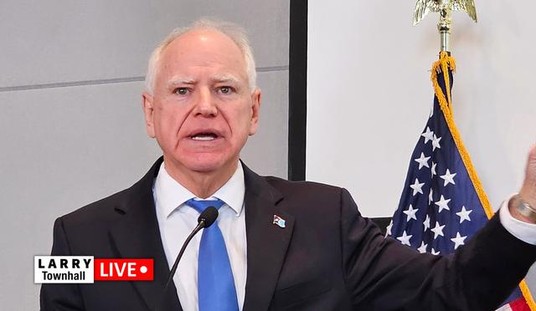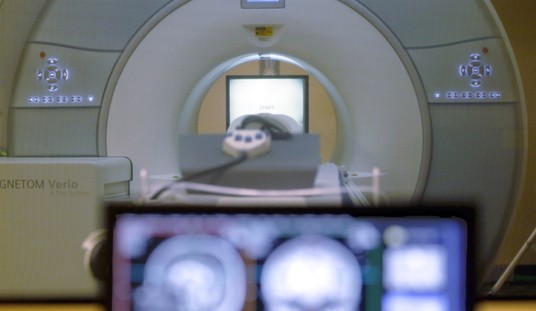* Events listed in Benghazi time.
September 11, 2012, 8:30 PM: U.S. Consulate in Benghazi, Libya. All is quiet, Ambassador Chris Stevens has recently finished a meeting with the Turkish consul general.
9:40 – 9:42 PM: Alarms sound, indicating something is wrong. The compound is under attack. A senior State Department security officer at the consulate calls for assistance from the CIA base located less than 1 mile away.
9:59 PM: An unarmed drone is directed to fly over the consulate.
10:20 PM: First officers from CIA’s Global Response Staff arrive at the consulate to assist against attackers.
10:32 PM: National Command Center at the Pentagon notifies the Office of the Secretary of Defense and the Joint Chiefs of Staff of the attack. Secretary Panetta and General Dempsey are also informed of the situation.
11:00 PM: Panetta and Dempsey meet with President Obama for a previously scheduled meeting and discuss the attack.
11:11 The unarmed Predator drone arrives to provide aerial reconnaissance.
11:30 PM: After fighting at the consulate, the CIA team leaves with State Department officers, including the body of information officer Sean Smith, for the CIA base. Ambassador Stevens has not been located and is not included.
11:56 PM: Attacks by rocket-propelled grenade and small arms begin at the CIA base.
12:00 – 2:00 AM: After discussions, Panetta orders teams from Rota, Spain to prepare for deployment to Tripoli and Benghazi. Special operations force teams in Croatia and in the U.S. are also ordered to prepare for deployment to a staging base in southern Italy.
1:01 AM: Attack at the CIA base stops.
1:15 AM: CIA reinforcements arrive at the airport in Tripoli.
2:39 AM to 2:53 AM: The National Military Command Center gives formal authorization for deployment of special operations teams from Croatia and the U.S.
4:30 AM: After being delayed by negotiations with Libyan authorities, the CIA reinforcements leave the airport.
5:04 AM: CIA reinforcements arrive at the CIA base. Former Navy SEAL Glen Doherty joins former Navy SEAL Tyrone Woods on the roof to defend against attack.
5:15 AM: New attack on CIA base begins with mortars.
5:26 AM: Attack ends. Woods and Doherty have been killed.
6:00 AM: Libyan forces arrive and take the Americans to the airport.
* From here, Pentagon and CIA timelines completely diverge on when the Americans were flown back to the U.S.
On September 12, 2012, at 10:43 AM, President Obama stood in the Rose Garden at the White House and gave the first official address concerning the attack that began the day before in Benghazi, Libya. Questions began immediately as to what exactly happened and why the attack had occurred. To date, the outpouring of information from official sources has been confusing at best and many times conflicting. While many in the media and public have focused on sorting out the statements that have been made in the months following the attacks, perhaps the answers lie prior to the events in Benghazi. Considering the events in Libya leading up to the Benghazi attack, evidence appears to indicate that what happened on September 11, 2012 was the climax of a series of events that began on February 15, 2011.
The Libyan civil war started on February 15, 2011 with protestors gathered in the city of Benghazi. Libyan security forces clashed immediately with the protestors and the rebellion quickly spread throughout the country. Not long after the initial incident, the United Nations Security Council passed a resolution to freeze the assets of Libyan leader, Colonel Muammar Gaddafi. Meanwhile in the United States, the President signed a secret order allowing the U.S. government to provide covert support to the rebels in Libya. In April, the U.S. then decided to send $25 million in aid to the Libyan rebels that consisted of food and equipment, but excluded weapons. However, while not openly sending in arms, the U.S. did participate, along with European nations, in airstrikes against Libyan forces to help the rebels regain their ground against Gaddafi. Soon after, the U.S. announced at a NATO meeting in Rome that they hoped to release some of the frozen assets to help the NATO effort to give money to the rebels. Secretary of State Hillary Clinton stated from the meeting, “Clearly on our agenda is looking for the most effective way to deliver financial assets and other means of supporting and helping.” It was at this meeting that, for the first time, world leaders openly discussed the idea of giving arms to the Libyan rebels. France quickly took action, airdropping weapons and ammunition into Libya, while in the U.S. the House voted against providing more aid to the rebels. Finally, on October 23, 2011 the war ended in Libya with the rebels victorious against Gaddafi, who was killed in the battle. However, before the Libyan civil war came to end, world leaders recognized a new problem on the horizon.
Left in the wake of Gaddafi’s decades-long regime were huge stockpiles of weapons. Arms provided openly and covertly to the rebels during the war only added to a new threat facing Libya and the world. Concerns were immediate that Libyan weapons would make their way into the hands of al Qaeda. The U.S. wasted no time in beginning to work with the new Libyan leadership in trying to reign in the massive amount of weapons that had been found around Tripoli. For their part, the United Nations Security Council adopted a resolution to help secure the loose weapons. Unfortunately, efforts to stop al Qaeda from capitalizing on the Libyan war were too late. As reported by Reuters shortly after the conflict began, Libyan weapons had already been secured by al Qaeda in Algeria. After the war, al Qaeda acknowledged that they had “been one of the main beneficiaries of the revolutions in the Arab world.” Still, the responsibility of securing the Libyan weapons was one the world was committed to continuing.
Syria became the next country involved in the “Arab Spring” and, once again, countries around the world had to weigh how involved they would be in helping the Syrian opposition. The official U.S. stance was to pursue diplomatic actions, such as sanctions, and not arm the Syrian rebels. At the same time, however, the CIA was in southern Turkey helping to distribute weapons from allies to the Syrian opposition fighters. In March 2011, U.S. Ambassador Chris Stevens became the official U.S. liaison to the Libyan opposition, who were believed to have links to al Qaeda. Not long after Stevens’ appointment, the U.S. announced a program that sought to buy man-portable air-defense systems (MANPADS) that had gone missing in Libya. Glen Doherty, one of the former Navy SEALs who was killed in the Benghazi terrorist attack, was working in Libya for the state department to find and destroy the MANPADS, capable of shooting down commercial airliners. Meanwhile at the consulate, with Benghazi still flooded with weapons from the war, Ambassador Stevens and U.S. embassy staff were becoming increasingly concerned for their safety. Security threats were on the rise in the months leading up to the attack on the consulate in Benghazi. As noted earlier, Ambassador Stevens’ last meeting was with the Turkish consul general and at least one source has suggested the meeting was to negotiate a weapons transfer; specifically, SA-7 MANPAD missiles from Libyan fighters. Interestingly, a week prior to the attack, a Libyan ship docked in Turkey with a large amount of weapons, including SA-7 MANPADS, bound for Syria.
While the official reason given for Ambassador Stevens being in Benghazi on such an important anniversary is that he was to be present at the opening of a new English-language school, it seems he was there to do his job as a liaison for the Libyan rebels. Considering the fact that the U.S. has armed Libya before, the secret order President Obama authored at the start of the new Libyan war may have included giving weapons to the Libyans once again. However, as the weapons quickly ended up in the hands of al Qaeda, the United States would have been urgently seeking to recover them; not only due to the security concerns but the fact that terrorists were armed as a result. When Syria went to war after Libya, the U.S. was in an opportune position to give the Libyan weapons to the new resistance in Syria. Once again,however, al Qaeda and other terrorist groups were lying in wait to receive the spoils of the newest conflict in the region. Considering Iran-Contra and Fast and Furious, a new scandal wherein the United States once again armed terrorists would certainly be one the current administration would seek to cover-up. If terrorists managed to kill four Americans with weapons potentially provided by the United States, the administration would not only be concealing a scandal but also seeking to avoid criminal prosecution for its hand in enabling the attacks.














Join the conversation as a VIP Member